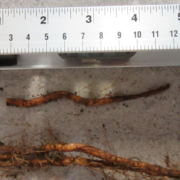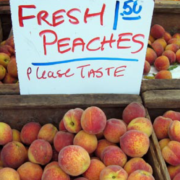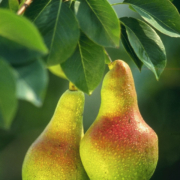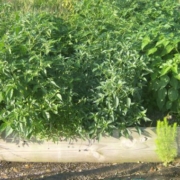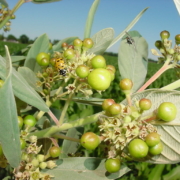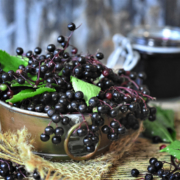Root Propagation
 Print This Post
Print This Post
By Justin Duncan, NCAT Agriculture Specialist
I developed a love of plants as a young boy, helping my father in his yard-of-the-month winning front yard. I hated pruning roses, but everything else was so amazing to me. I think the thing that really hooked me was propagation, although I didn’t know the word for it back then. When I realized I could make a whole new plant from just a piece of another, it did something permanent to my little mind that is still with me today.
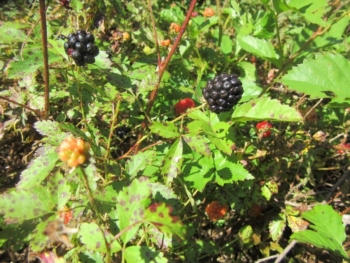
Rubus trivialis vines scramble rather than form the erect canes of cultivated Rubus fruticosus. Note that this specimen is affected by Anthracnose.
Here in southeast Texas, it’s blackberry season! Well, technically they are Rubus trivialis, or dewberries, but it’s still a black aggregate fruit that can be made into cobblers or ice cream, or eaten out of hand like its close blackberry kin. I grew up calling them blackberries and, to me, it’s not a misnomer because it is a black berry. In any case, if you find one that you really like, you can make more of them.
Root Propagation of Bramble Fruits and Fruit Trees
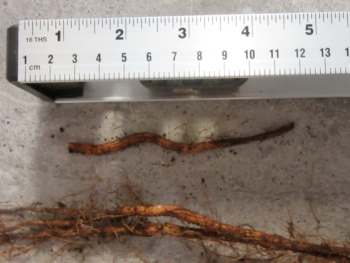
These roots are about the right size and length to make strong new plants. Root thickness will vary, depending upon species and variety of bramble used.
With blackberries and other bramble fruit like raspberries, choose long, thickened roots and cut them into 3-inch sections. They can be cut longer, but I find that more plants can be made with shorter cuttings. Longer cuttings will produce larger plants initially, but the difference will even out over time.
The cuttings can be planted in small pots to recover. Once new growth is 4 to 6 inches long, your new plant can be transplanted into place.
This technique can also be used for other plants besides brambles. Native persimmons are good candidates for root propagation, since they readily send up suckers. Suckers are shoots that come up from the roots rather than from other branches. They allow copses, or sometimes entire forests, as is the case with aspens in Utah’s Pando forest, to be comprised of a single tree with many trunks. You can capitalize on this habit to quickly create rootstock for Asian persimmons. Find a persimmon tree (Diospyros virgiania) and scrape away some topsoil to find a pencil-diameter feeder root. Extract a 3-foot length of root. Then cut it into 6- to 8-inch sections and pot them. After a season of growth, these rootstocks should be ready for grafting an Asian persimmon scion of your choice.
The same methods can be applied to “wild” peaches and plums. My great-gramma always had “wild” plum trees at her house. These were small, sweet, tart plums that aren’t found in stores but early in the summer, many of them found their way into our bellies. They are great for making wine and perfect for rootstocks.
 This plum root sucker let me know where to find the roots I needed to dig. |
 Long plum roots and suckers extracted from the soil. |
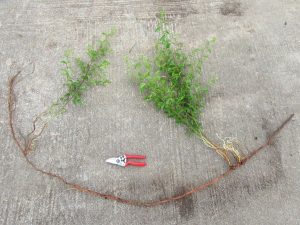 One long root can make several cuttings for new trees. |
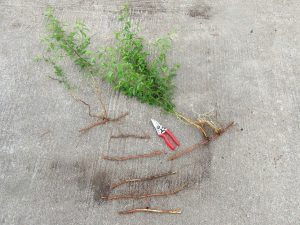 Newly cut root sections to be potted up. After a few seasons of growth, these will be ready to become rootstock for improved varieties of plum. |
 New stems emerging from a plum root. These can be grafted with improved varieties. |
 It’s always best to use a clean, sharp pruning tool to make your cuttings to minimize damage and stress. |
Root propagating can be a fun gardening task or a tedious task in a commercial operation — it’s all a matter of perspective. Keep your pruners sharp and don’t forget to post your cuttings progress on the ATTRA Sustainable Agriculture Facebook page.
Related Resources
Plums, Apricots, and Their Crosses: Organic and Low-Spray Production
Budding and Grafting Fruit Varieties for Organic Production
This publication is produced by the National Center for Appropriate Technology through the ATTRA Sustainable Agriculture program, under a cooperative agreement with USDA Rural Development. ATTRA.NCAT.ORG.

